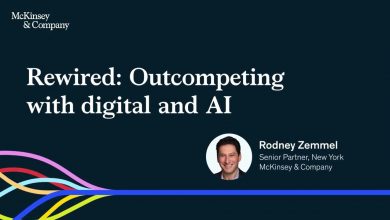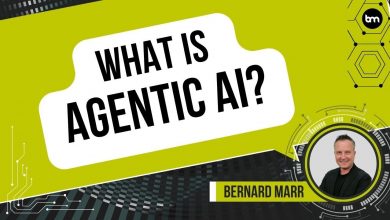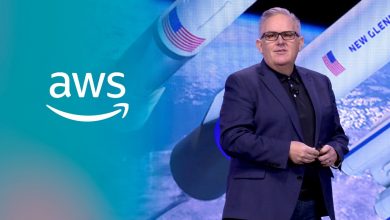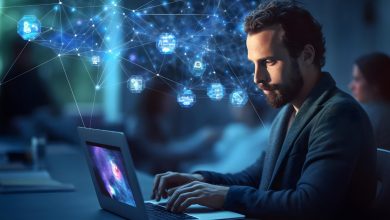The Future of Self Sovereignty AI Agents, DAOs, and the User Owned Internet
Self-sovereign AI represents a paradigm shift toward a decentralized, user-centric approach to artificial intelligence.
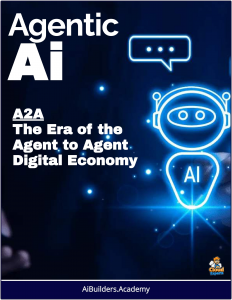 Self-sovereign AI is a concept rooted in the intersection of artificial intelligence (AI) and decentralization, emphasizing user autonomy, control, and ownership over AI systems and their outputs.
Self-sovereign AI is a concept rooted in the intersection of artificial intelligence (AI) and decentralization, emphasizing user autonomy, control, and ownership over AI systems and their outputs.
It contrasts sharply with centralized AI models, such as those operated by large corporations or governments, where users have little influence over how the AI is developed, deployed, or governed.
Instead, self-sovereign AI empowers individuals or communities to define, customize, and manage AI agents according to their specific needs, values, and ethics, free from external intermediaries or opaque oversight.
This idea has gained traction within the decentralized AI (DeAI) movement, particularly through initiatives like those from Onicai and the Dfinity Foundation on the Internet Computer Protocol (ICP).
Core Principles of Self-Sovereign AI
User Ownership and Control
In a self-sovereign AI system, users—not corporations or third parties—own and govern the AI models. This includes control over the data used to train the AI, the algorithms it employs, and the decisions it makes. Users can deploy their own AI agents, tailoring them to specific tasks or preferences, rather than relying on one-size-fits-all solutions from centralized providers.
Decentralization
Self-sovereign AI leverages decentralized infrastructure, such as blockchain platforms like ICP, to run AI models in a distributed manner. This eliminates reliance on centralized servers or cloud services, reducing the risk of censorship, surveillance, or manipulation by a single authority. By operating on-chain or within decentralized networks, the AI’s processes become transparent and auditable, ensuring accountability.
Data Sovereignty
Users retain ownership of their data, deciding what is shared with the AI and how it is used. This contrasts with centralized AI, where user data is often harvested, stored, and exploited without explicit consent. Self-sovereign AI systems can incorporate privacy-preserving techniques, such as encrypted computation or federated learning, to protect sensitive information.
Autonomy and Customization
The AI serves the user’s goals directly, rather than those of a corporate or governmental entity. For example, a self-sovereign AI could prioritize a user’s ethical standards or cultural context over profit-driven biases embedded in centralized models. It enables niche or bespoke AI solutions, fostering innovation in areas that might not be commercially viable for large-scale providers.
Resistance to External Influence
By removing centralized control, self-sovereign AI reduces the risk of manipulation by governments, political groups, or corporations. This aligns with the vision articulated by Onicai’s leadership, including CTO Arjaan Buijk and CEO Patrick Friedrich, who emphasize freeing AI from “huge organizations” or state actors (Cointelegraph, November 29, 2024).
How Self-Sovereign AI Works on ICP
The Internet Computer Protocol (ICP), developed by the Dfinity Foundation, is a key enabler of self-sovereign AI due to its ability to host AI models within smart contracts (canisters) on a decentralized blockchain. Here’s how it supports the concept:
- On-Chain Execution: AI models run entirely on ICP’s blockchain, allowing users to deploy and manage their own AI agents without relying on external infrastructure. For instance, in August 2023, Dfinity demonstrated this by running an open-source LLM (llama.cpp) in a canister.
- User-Driven Governance: Canisters can be controlled by individuals or decentralized autonomous organizations (DAOs), giving users the ability to define how their AI operates, from training data to output parameters.
- Transparency and Immutability: The blockchain ensures that AI processes are verifiable and tamper-proof, reinforcing trust in the system and aligning with the self-sovereign principle of accountability.
- Scalability: ICP’s subnet architecture supports the computational demands of AI, making it practical for users to run sophisticated models tailored to their needs.
This infrastructure underpins initiatives like Onicai’s Proof of AI Work (PoAIW), where self-sovereign AI agents (mAIners) perform tasks, prove their work, and earn rewards in a trustless, user-controlled ecosystem.
Examples and Implications
- Personal AI Agents: Imagine a self-sovereign AI assistant that manages your schedule, finances, or creative projects, operating solely under your direction and using only the data you provide. It runs on a decentralized network like ICP, ensuring no third party can access or alter it.
- Community-Driven AI: A group of researchers or a small business could deploy a custom AI model to analyze local environmental data, with full control over its design and outputs, rather than relying on a generic, centralized tool.
- Resistance to Bias: Centralized AI often reflects the biases of its creators (e.g., profit motives or political agendas). Self-sovereign AI allows users to embed their own values, reducing unwanted influence.
Arjaan Buijk and Onicai’s Perspective
Arjaan Buijk, CTO of Onicai, ties self-sovereign AI to the broader DeAI movement, arguing that it unlocks AI’s potential by placing it in the hands of end-users.
In the Manifesto for Decentralized AI (co-authored with Dfinity researchers), he and his team critique centralized AI’s limitations—such as stifled innovation due to profitability concerns—and propose self-sovereign AI as a solution. Buijk emphasizes that this approach comes “from a direction of potential that AI has,” rather than fear of its misuse (Cointelegraph, November 29, 2024). Onicai’s PoAIW mechanism exemplifies this by enabling AI models to operate autonomously under user control, verified and rewarded on ICP without intermediaries.
Benefits
- Empowerment: Users gain agency over AI, aligning it with their personal or communal goals.
- Innovation: Niche applications flourish, as individuals can experiment without corporate gatekeepers.
- Privacy: Data remains under user control, reducing exploitation risks.
Challenges
- Technical Complexity: Deploying and managing AI on decentralized platforms requires expertise, though platforms like ICP aim to simplify this.
- Resource Intensity: Running AI on-chain consumes significant computational resources (e.g., ICP cycles), which could limit accessibility.
- Adoption: Shifting from familiar centralized models to self-sovereign alternatives requires a cultural and educational shift.
Conclusion
Self-sovereign AI represents a paradigm shift toward a decentralized, user-centric approach to artificial intelligence. By leveraging technologies like ICP, it ensures that AI serves individuals rather than centralized powers, fostering autonomy, transparency, and innovation. As articulated by visionaries like Arjaan Buijk, it’s a step toward realizing AI’s full potential as a tool for human empowerment, not corporate or state dominance.
